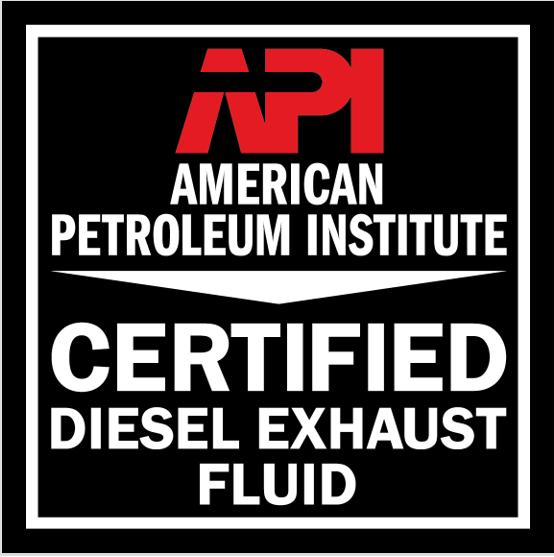Fire apparatus designers have been challenged with adapting to new engine emissions regulations every three to five years since 1991. These regulations took a major step in 2010 when the Environmental Protection Agency (EPA) emissions regulations forced a reduction in oxides of nitrogen (NOx). To achieve these lower NOx levels, diesel engine manufacturers had to choose between a technology that would significantly increase exhaust gas recirculation (EGR) flow or one that used selective catalytic reduction (SCR). Most engine manufacturers worldwide chose the SCR route because it provided the NOx reduction without sacrificing fuel economy. SCR-equipped vehicles require a tank of diesel exhaust fluid (DEF) to make the system work.
WHAT IS DEF?
DEF is a colorless, odorless, nontoxic, nonflammable, injectable fluid used in SCR diesel engine exhaust systems to reduce regulated exhaust emissions. It is a mixture of 32.5 percent urea and distilled water. Although DEF is not toxic, it is corrosive to metal components. Should it be spilled while filling the vehicle tank, the affected metal components should be rinsed with water. ISO Standard 22241-1 defines the characteristics of approved DEF fluid. When purchasing DEF, look for this ISO standard or the “API classified” symbol.

While the engine is running, an electronically controlled injection of DEF is made into the SCR system downstream of the diesel particulate filter (DPF) and upstream of the SCR catalyst. The DEF is converted to ammonia, which reacts with the NOx exhaust from the engine in the SCR catalyst. The resulting tailpipe emissions are nitrogen, carbon dioxide, and water. Although the need to add DEF adds an extra step, DEF technology does improve fuel economy, increase the intervals between maintenance events, and enhance engine performance.
OPERATING DEF-EQUIPPED VEHICLES
Because DEF injection is required to maintain the appropriate levels of NOx emissions, the DEF system is part of onboard diagnostic (OBD) requirements. Sensors ensure the proper DEF temperature, DEF concentration, and DEF level. Most vehicles include a DEF level gauge (similar to the fuel-level gauge) on the dash. A lamp indicates when levels are low.
Because operating a vehicle without DEF or with improper DEF level concentration can result in increased emissions, the EPA requires that an illuminated lamp on the dash indicate these situations. For nonemergency vehicles, these conditions can reduce engine performance, including derated horsepower and torque. In fact, if the DEF tank is empty and the vehicle idles for more than one hour, the operator adds fuel without adding DEF, or if the key switch is turned off, nonemergency vehicles will be limited to a maximum speed of five miles per hour.
The EPA initially proposed these derate requirements for emergency vehicles as well. However, through the efforts of the Fire Apparatus Manufacturers’ Association (FAMA), the International Association of Fire Chiefs (IAFC), and industry manufacturers, emergency vehicles were granted a “derate exemption.”
Special emergency vehicle programming ensures that emergency vehicles will not experience engine horsepower, torque, or speed derates because of DEF quality, temperature, or level. Even so, departments should not continue to operate without DEF because it can cause DEF-cooled components, like the DEF injector, to fail. Should the DEF lamp and the malfunction indicator lamp (MIL) light up at the same time, this could indicate a DEF sensor failure. The vehicle should be inspected and repaired, if necessary, by a qualified technician.
MAINTAINING DEF-EQUIPPED VEHICLES
The most important aspect of maintaining DEF equipped vehicles is to keep the DEF above the minimum level. It is recommended that operators top off the DEF tank when they refuel the vehicle. This reduces the chance that low DEF levels will create bubbles that might result in DEF concentration faults.
The SCR system includes a DEF filter. For most DEF-equipped vehicles, this filter requires maintenance only if contaminants are in the DEF or if the vehicle reaches 300,000 miles. Most of our emergency vehicles do not reach the mileage limitation, so just make sure you use good quality DEF to avoid plugging.
The vehicle’s original equipment manufacturer (OEM) supplies most of the DEF components, including the DEF tank, lines, and sensor. If replacement parts are needed, please connect with your apparatus OEM.
DEF AVAILABILITY AND STORAGE
DEF is widely available. It can be purchased in gas stations, auto parts stores, and even department stores. When purchasing DEF in a container, it is a good idea to remove the cap and inspect the seal to ensure someone did not purchase the container, use the DEF, and return the container, filled with water, to the store. Many fueling stations offer DEF in bulk at the pump.
Storage. DEF freezes at 11°F. The components, including the tank, hoses, and valves, on your apparatus are designed to accommodate the expansion of the DEF when the temperature drops below this value. DEF does not degrade when it freezes, but it does degrade at temperatures above room temperature. The typical shelf life of DEF is up to two years at room temperature (75°F). Be aware that storage life decreases by six months for each 10° above room temperature.
DEF has proven to be an effective way to meet federal emission requirements without sacrificing vehicle performance, fuel economy, or maintenance intervals. Understanding how to maintain and operate DEF-equipped vehicles can result in greater apparatus uptime and performance.
FAMA is committed to the manufacture and sale of safe, efficient emergency response vehicles and equipment. FAMA urges fire departments to evaluate the full range of safety features offered by its member companies.
FAMA Forum creative content is contributed by unpaid volunteer authors. Any opinions expressed herein are exclusively those of the author and are not intended to represent the views of FAMA or its member companies.






